Category: AWS Marketplace
Docker Trusted Registry – Now in the AWS Marketplace
During my trip to the AWS Loft earlier this month, I spoke to 8 startups for the AWS Podcast. Almost all of them told me that they are making use of Docker on AWS, either directly or via Amazon EC2 Container Service. They love the flexibility that it gives them, and appreciate the ease with which they can move from development (often on a laptop) to test, and then on to production while remaining highly confident that their code and their configurations will work as expected in each environment.
In order to enable a very wide variety of use cases, we are making the Docker Trusted Registry (DTR) available in the AWS Marketplace. You can launch it on an EC2 instance in order to create a private registry.
This new offering supports the popular laptop-to-cloud workflow by giving you a central, highly accessible location to store and manage your Docker images for deployment in your chosen on-premises or cloud environment. You can create custom access control levels and use them to regulate access to the images in your registry. You can require the use of SSL certificates or LDAP entries, and you can take advantage of all of the network access controls that are part of the Virtual Private Cloud (VPC).
To learn more about the configuration options that are available to you, read the post New AWS Support for Commercially-Supported Docker Applications: Docker Trusted Registry and Docker Engine on the AWS Partner Network Blog.
— Jeff;
Now Available – SQL Server Enterprise Edition AMI for EC2
You can now launch SQL Server Enterprise Edition on Amazon Elastic Compute Cloud (EC2) using a new, pre-configured AMI (Amazon Machine Image).
This edition of SQL Server offers some new and unique features including:
- High Availability – You can configure a primary database and up to four active, readable secondary databases into an Always-On availability group.
- Self-Service Business Intelligence – You can use Power View to interactively explore and visualize your data.
- Data Quality Services – You can use organizational and third-party reference data to profile, cleanse, and match your own data.
- Online Changes – You can restore files and file groups, alter schemas, and make indexing changes while your database remains online.
This edition of SQL Server is also more scalable. In contrast to the Standard Edition of SQL Server which maxes out at 16 cores and 128 GiB of memory, the Enterprise Edition is able to take advantage of the 32 cores and 244 GiB of memory provided by the r3.8xlarge instance.
You can run this new AMI on r3.x2large, r3.4xlarge, and r3.8xlarge instances in the US East (Northern Virginia), US West (Oregon), and EU (Ireland) regions (visit the AWS Marketplace for more information):
You can run the AMI On-Demand or you can purchase an EC2 Reserved Instance with a one or three year term.
— Jeff;
Now Available – AWS Marketplace in the Frankfurt Region
AWS Marketplace makes it easy for you to find, buy, and quickly start using a wide variety of software products from developers located all over the world:
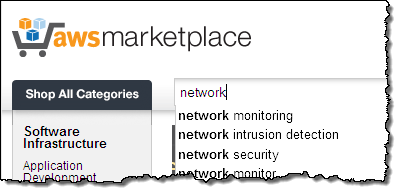
Open in Germany
Today we are making AWS Marketplace available to users of our new EU (Frankfurt) region. If you are using this region you can make use of over 700 products right now, with more on the way. The AWS Frankfurt region is fully compliant with all applicable EU Data Protection laws, so you can use AWS Marketplace software without data compliance concerns.
You can run popular security products, business intelligence solutions, storage software, and data products. You can also run hundreds of open source titles. Products are priced on an hourly basis so that you can get started with no upfront commitment. There’s also an annual priced option that can be even more economical if you have steady-state workloads. We’ll be adding monthly priced listings on May 1.
To find products of interest to you, simply visit AWS Marketplace, enter a search term, and then select the EU (Frankfurt) region on the left:
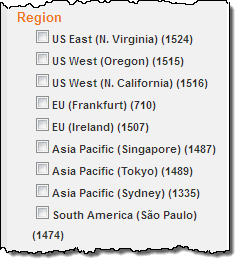
Inspect the results, find the desired product, and click on it to initiate the purchasing process:
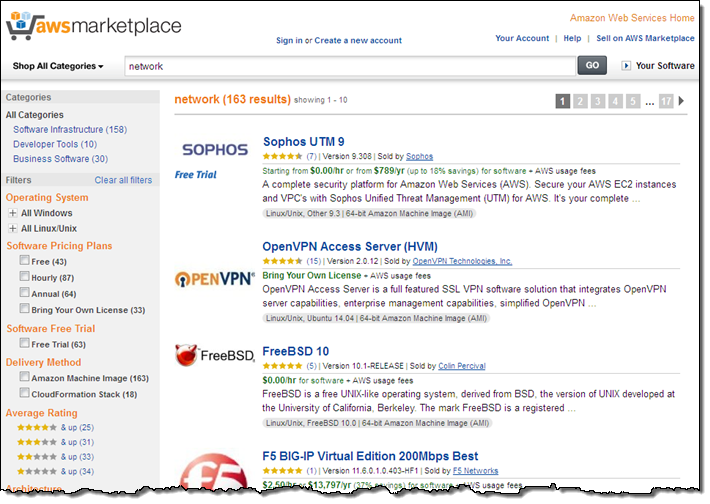 If you are a software vendor or developer and would like to list your products in AWS Marketplace, please take a look at the Sell on Marketplace information. Customers will be able to launch your customers in minutes and pay for it as part of the regular AWS billing system. As a vendor of products that are available in AWS Marketplace, you will be able to discover new customers and benefit from a shorter sales cycle. You also have the opportunity to offer free trials of your product with no additional engineering effort.
If you are a software vendor or developer and would like to list your products in AWS Marketplace, please take a look at the Sell on Marketplace information. Customers will be able to launch your customers in minutes and pay for it as part of the regular AWS billing system. As a vendor of products that are available in AWS Marketplace, you will be able to discover new customers and benefit from a shorter sales cycle. You also have the opportunity to offer free trials of your product with no additional engineering effort.
— Jeff;
New in the AWS Marketplace – Oracle Linux
Version 6.6 of Oracle Linux is now available in AWS Marketplace, with both hourly and annual pricing:
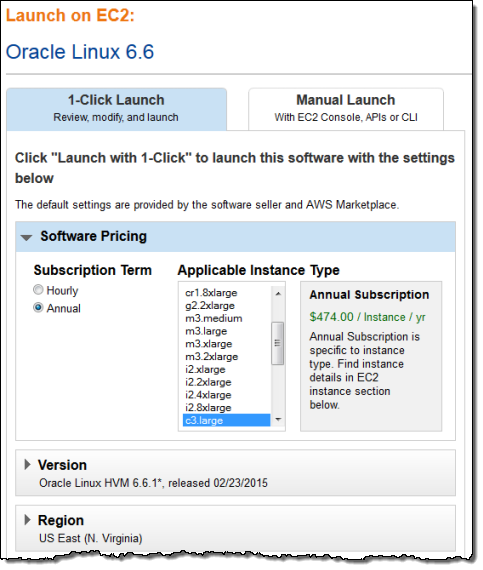
The 64-bit Unbreakable Enterprise Kernel was designed to provide scalability, reliability, and performance improvements for demanding enterprise applications, including Enterprise Oracle workloads.
This is a fully supported way to run Oracle Linux on AWS. Patches and updates are available from Oracle; 24×7 premium support is available through Orbitera.
The AMI (HVM) makes use of EBS volumes for storage and is recommended for use on the c3.large instance type (it can also be run on many other instance types).
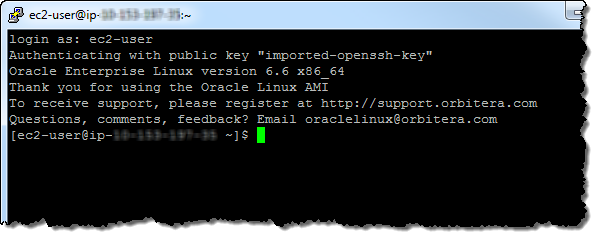
To learn more, read the Oracle Linux Product Page and the Oracle Linux FAQ, then Launch Oracle Linux in the AWS Marketplace!
Oracle Linux is available today in the US East (Northern Virginia), US West (Oregon), US West (Northern California), EU (Ireland), Asia Pacific (Singapore), Asia Pacific (Sydney), Asia Pacific (Tokyo), and South America (São Paulo) regions. Software usage fees start at $0.06 / hour.
— Jeff;
Simplified PHP Development – Z-Ray in the Cloud from Zend
PHP development on AWS just got easier today. Zend Technologies (the PHP company) is now delivering Z-Ray productivity booster for PHP developers on the AWS Marketplace.
The success of a platform is based on many factors, developer productivity being one of the most important. Productivity leads to innovation and innovation leads to differentiation and (hopefully) success in the marketplace! Many of the companies that I talk to are trying to gain an advantage in their industry through their web and mobile applications. The Cloud gives them the ability to automate and provision environments quickly, but they are still looking for tools that will help their developers to work smarter and more efficiently.
Z-Ray, a key feature of the new Zend Server 7 (now available in Developer Edition on the AWS Marketplace) is a tool that can help PHP developers make this happen! Z-Ray is a breakthrough technology for getting in-context feedback on the behavior of PHP code as it is being developed. It works by injecting real-time application feedback into the developer’s browser. So if I’m working on a web page, Z-Ray’s information is displayed at the bottom, like this (all images were supplied by Zend, in case you are wondering where the cool formatting came from):
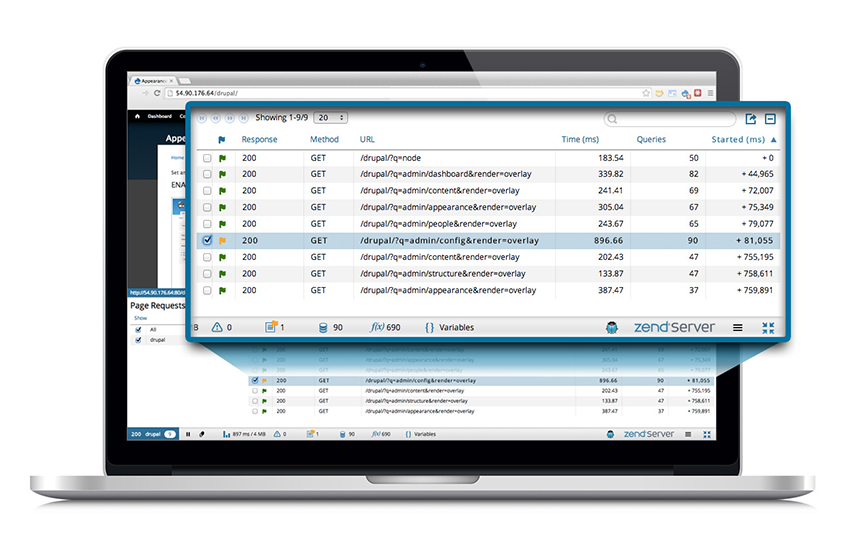
Every time I refresh a page, the data and statistics in Z-Ray are updated in real time. Z-Ray provides information about page requests, execution time and memory peaks, events, errors & warnings, SQL query execution, functions, and variables.
When I click on any of the monitored features, Z-Ray provides an expanded and more detailed view. Here’s some profiling and usage info for all of the functions used on the target page:
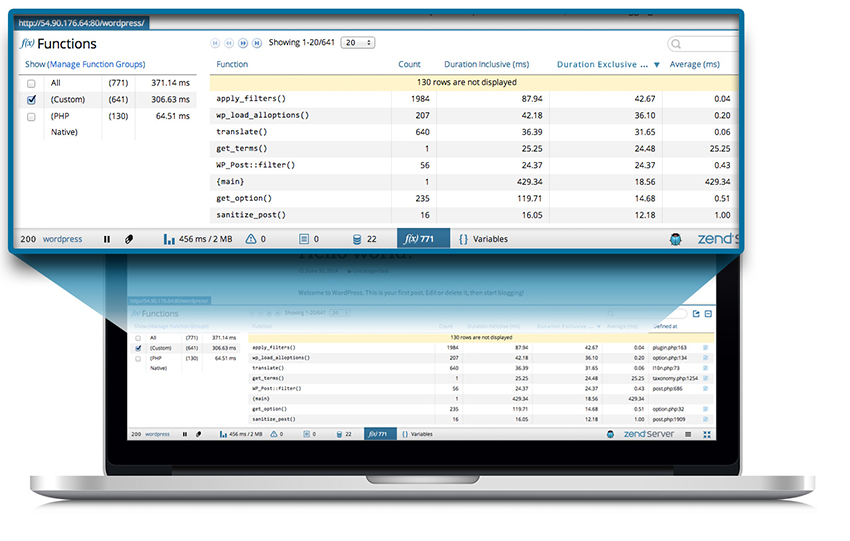
From this view, I can then drill down into a particular function and can even debug Zend Server apps from within Z-Ray. The local and global variables are also accessible:

Z-Ray also provides insights in to database activity:
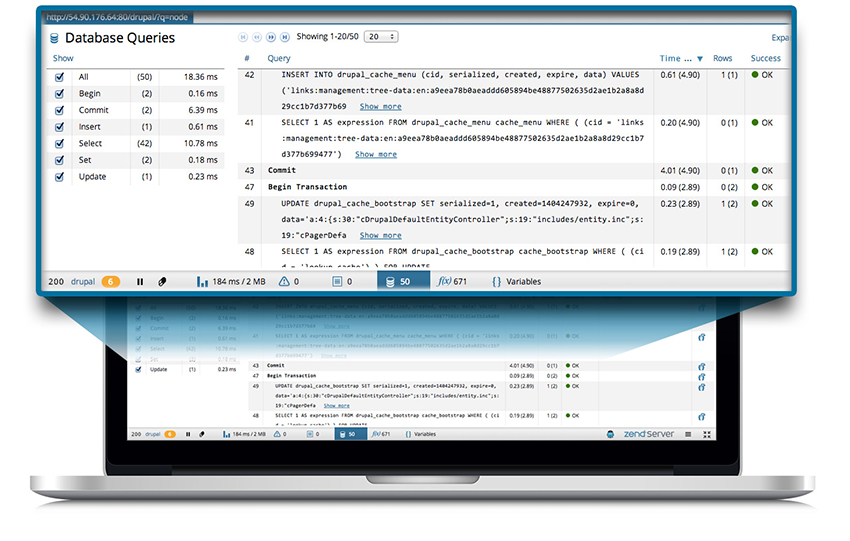
Zend is essentially leveraging their in-depth understanding of the PHP runtime (the Zend Engine) and delivering insights to developers while they are developing. The information provided by Z-Ray helps drive up productivity and quality and eliminates friction further down the continuous delivery pipeline.
Many of the developers that I know find that writing a line of code, saving the changes, and refreshing the web site to view the changes is more efficient than configure debuggers and profilers or peeking in to log files to see what’s going on with their code. With Z-Ray, developers get the visibility they need without having to change any of their workflows or preferred tools.
With Z-Ray on AWS, you get the added benefit of being able to start with a very small developer image and transition to a full-fledged production environment that is fully-clustered and auto-scaling (AWS CloudFormation templates are available). In addition, developers using Zend Studio will be able to leverage Z-Ray to go directly to the page where the code to fix is located (Z-Ray will work with any of your favorite tools; you need not use Zend Studio).
Comit Developers is a managed service provider who leveraged the AWS Marketplace to deploy Z-Ray. They provide full service web site design, marketing, and consulting services. “Getting going on Zend Server was a snap through the AWS Marketplace, and now we’re in the process of moving more than 400 of our customers from a traditional hosted environment to Zend Server on AWS. One reason why we chose AWS is because the Marketplace makes it easy for us to select the software components specific to our customers industry and application requirements,” says Bryan “BJ” Hoffpauir, Chief Architect of Comit Developers. “Onboarding our customers and managing their instances is just so much better on AWS than how we used to do it.”
If you are a PHP developer and you build applications that make use of the AWS APIs, I’d like to invite you to take Z-Ray for a spin and see what it does for your productivity. Take advantage of the 30-day trial of Zend Server 7 and give Z-Ray a test drive today!
— Jeff;
New Annual Pricing for AWS Marketplace Products
I’m writing today to tell you about an important new feature for AWS Marketplace. As you may know, the AWS Marketplace lets you find, buy, and immediately start using a wide variety of software for developers and enterprises — 26 categories that span infrastructure, developer tools, and business applications.
You can now purchase AWS Marketplace products on an annual subscription basis. You will make a single upfront payment by selecting the annual option and an Amazon Elastic Compute Cloud (EC2) instance type and have unlimited use of the software for that EC2 instance for the next 12 months.
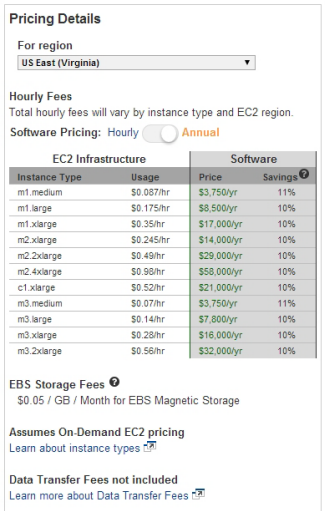 Annual subscriptions are be available for more than 90 software products from ISVs such as Alert Logic, Barracuda, Citrix, Fortinet, MicroStrategy, Progress Software, Riverbed, Sophos, Tenable, and Vormetric.
Annual subscriptions are be available for more than 90 software products from ISVs such as Alert Logic, Barracuda, Citrix, Fortinet, MicroStrategy, Progress Software, Riverbed, Sophos, Tenable, and Vormetric.
You can purchase an annual subscription with a couple of clicks:
- Find the desired product, note the annual subscription price, and click Continue.
- Specify the number of subscriptions that you would like to buy.
- Click Accept Terms & Launch.
Benefits of Annual Pricing
This new option provides you with several important benefits:
- Predictability – The annual pricing model will allow you to make more accurate forecasts of your software expenses when you are running steady-state workloads.
- Cost Savings – You can reduce your software costs by 10% to 40% or more when you purchase an annual subscription for select software products on AWS Marketplace. You can continue to pay for usage on an hourly basis in situations where your workload is bursty.
- Flexibility – You can run the software in any Availability Zone of any AWS Region in which the software is offered. The purchase is, however, specific to a particular EC2 instance type.
- Ease of Use – You can change your software pricing model without restarting any instances or re-launching any applications.
- Uniformity – As is the case with hourly pricing, all annual subscription charges will appear on your AWS bill. You don’t have to set up any new accounts or share the payment information with a third party.
The Details
If you are currently paying for a product on an hourly basis, you can convert to an annual subscription pricing by simply buying annual subscription(s) as needed. You do not need to restart the instance or re-launch the application.
Let’s walk through the process of purchasing a product through AWS Marketplace. The first step is to search for the product you are interested in. In this case I am lookingfor the Sophos UTM 9 security gateway:
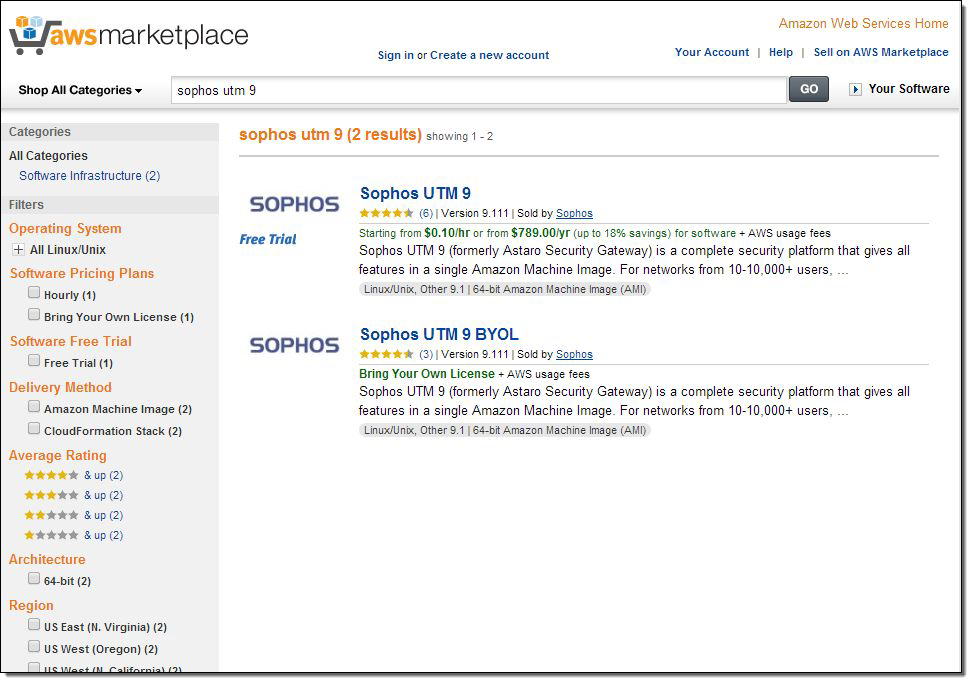
Then I review the pricing details:
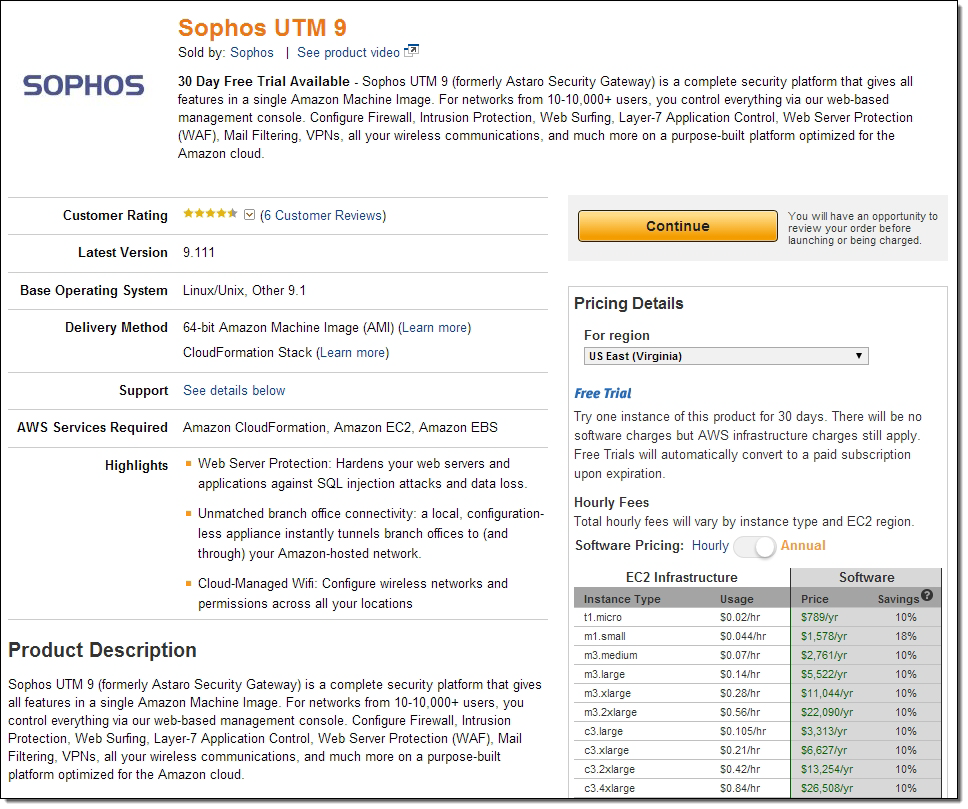
And make the purchase:
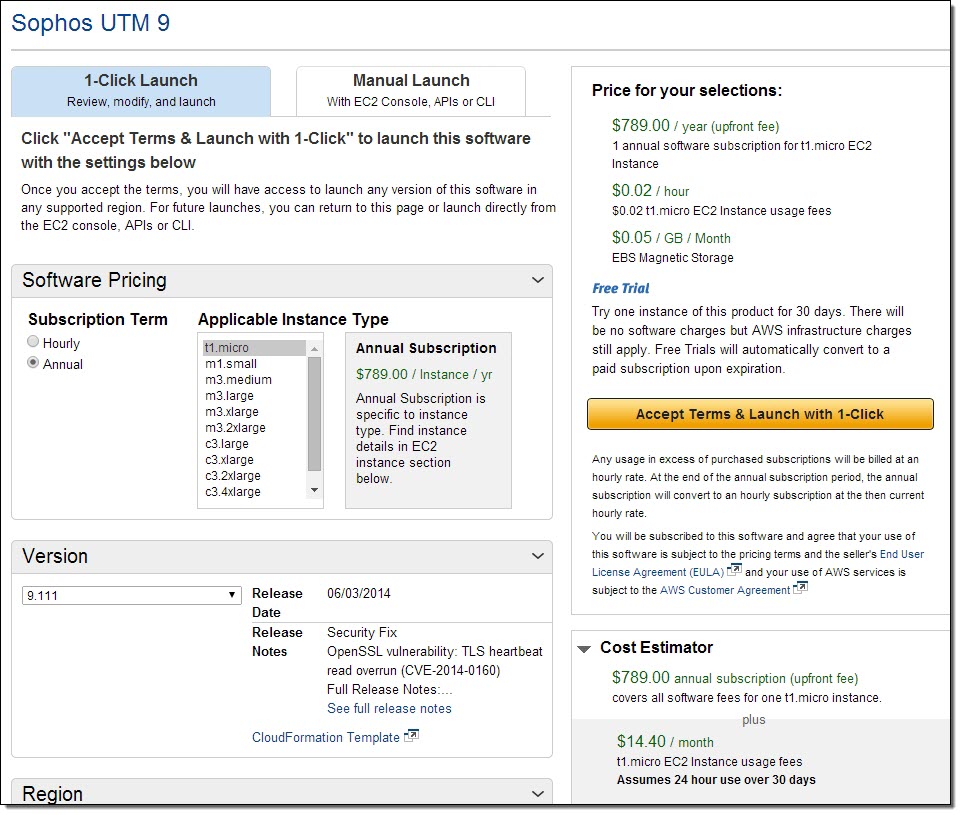
There will be a short wait while we spin up the EC2 instance, deploy the software and purchase your annual subscription:
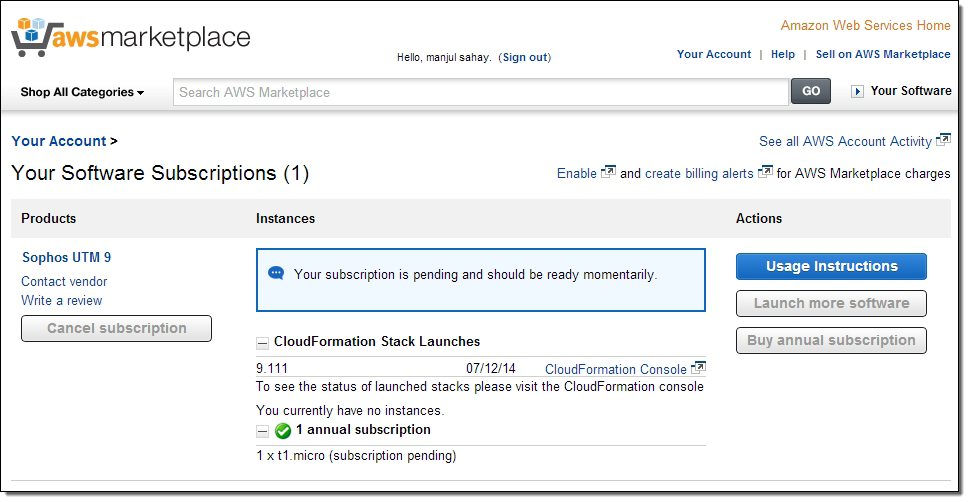
Once the software is running, you can click the Usage Instructions button to check on the next steps. If you want to add, cancel or change a subscription you can always go to the Your Software Subscriptions page to manage your software:
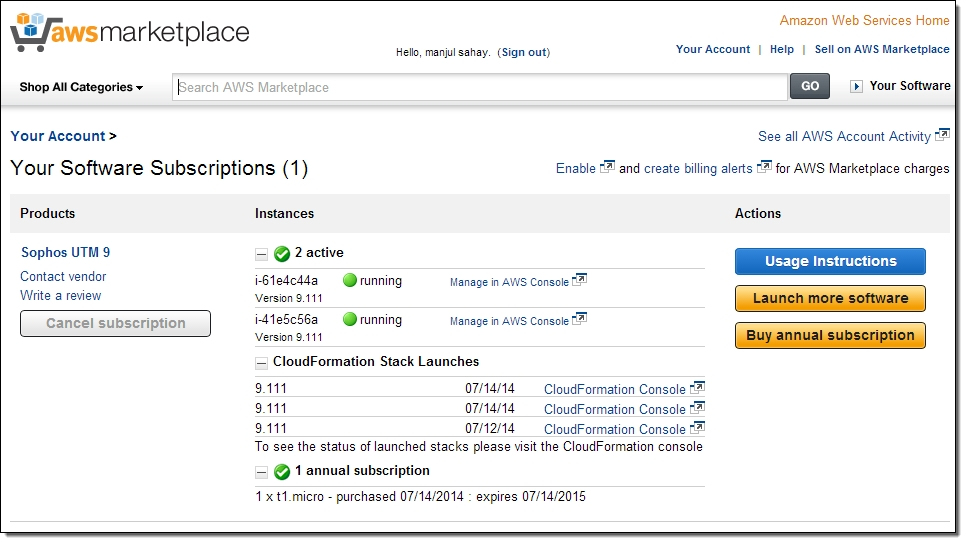
If you are an ISV and your software is already in AWS Marketplace, you can offer an annual subscription by submitting annual prices for your product.
Available Now
As I mentioned earlier, annual pricing is available in AWS Marketplace now!
— Jeff;
Marketing Analytics Tools for AWS Marketplace Partners
 The Amazon corporate culture, like many others, is driven by metrics and analytics. If you manage a product or a service, you are responsible for watching and driving the numbers “up and to the right.” If you are an Independent Software Vendor (ISV), Value-Added Reseller (VAR), or System Integrator (SI) with products in the AWS Marketplace, you can also use the metrics and analytics available to you in the Marketplace Marketing Dashboard to drive your online business.
The Amazon corporate culture, like many others, is driven by metrics and analytics. If you manage a product or a service, you are responsible for watching and driving the numbers “up and to the right.” If you are an Independent Software Vendor (ISV), Value-Added Reseller (VAR), or System Integrator (SI) with products in the AWS Marketplace, you can also use the metrics and analytics available to you in the Marketplace Marketing Dashboard to drive your online business.
Today we are launching a set of analytics tools that give you (as an ISV, VAR, or SI) the ability to dynamically view crucial traffic, usage and revenue data in time series form, create and compare marketing campaigns, and organize and present marketing data visually. Until now, sellers had to download their data and use an external tool to organize and analyze it. With today’s launch, these mission-critical business tasks can be performed from within the browser.
RefTag, You Are It
As a seller, you can embed referral tags (which everyone seems to call “reftags”) in your marketing activities (emails, inbound links, and social media messages) and the Marketing Dashboard will track and display the traffic, usage, and revenue driven by those activities. With today’s launch, you can now see the data organized by day, week, month or year. You can also scroll back in time to see historic data. The display is updated as you scroll; there’s no need to wait for a page refresh.
Quick Tour
You can view data by reftag or campaign, for any or all of your products:
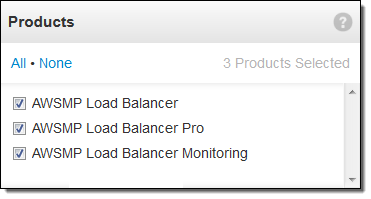
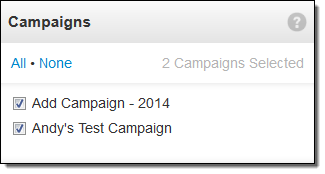
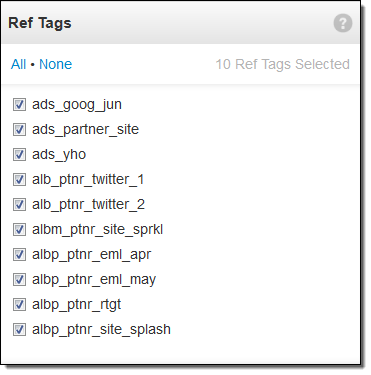
You can display your results in tabular or graph form:
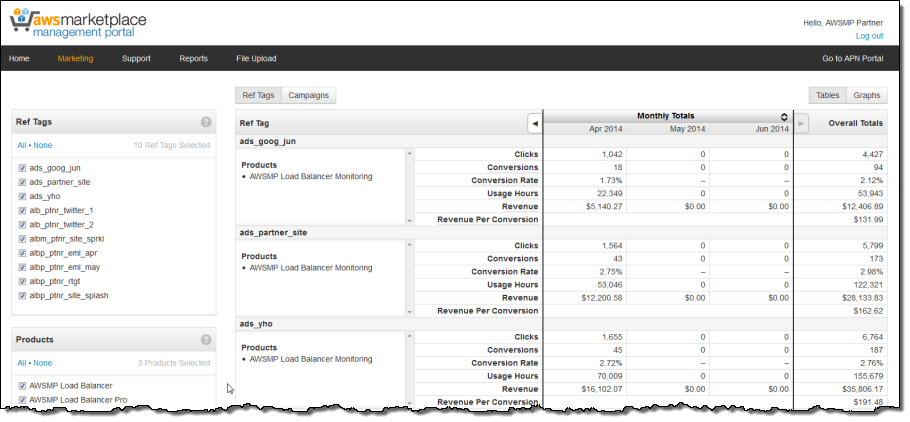
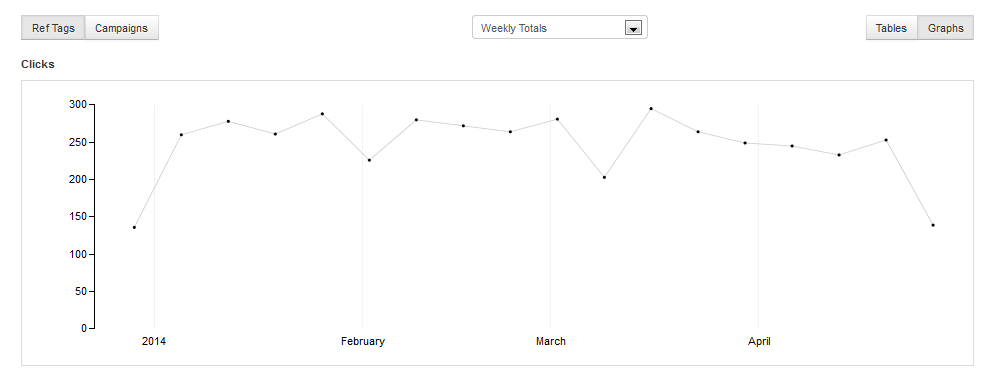
And you can select the desired timeframe:

Try it Now
This new feature is available now, and is accessible to all Marketplace sellers via the AWS Marketplace Management Portal. Watch our new video to learn more:
— Jeff;
New Education & Research Category in AWS Marketplace
AWS Marketplace makes it easy for you to find, buy, and immediately start using software and services in a wide variety of categories including Software Infrastructure, Developer Tools, and Business Software.
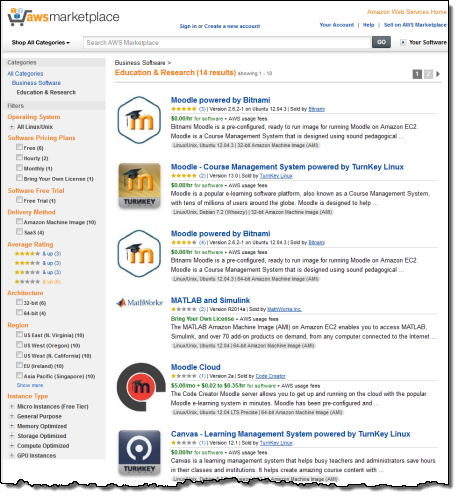 Today we are enhancing AWS Marketplace with a brand new Education & Research software category. The products in this category are designed to meets the needs of the Education and Research industries, with solutions targeted at K-12 and higher education. Students, academic administrators, instructors, and researchers can now purchase software that has been tested, vetted, and approved. With free trials and hourly and monthly pricing models, launching and testing products for applicability is easy and cost-effective.
Today we are enhancing AWS Marketplace with a brand new Education & Research software category. The products in this category are designed to meets the needs of the Education and Research industries, with solutions targeted at K-12 and higher education. Students, academic administrators, instructors, and researchers can now purchase software that has been tested, vetted, and approved. With free trials and hourly and monthly pricing models, launching and testing products for applicability is easy and cost-effective.
We’re starting out with a portfolio tracking and social networking tool (Mahara), a pair of Learning Management Systems (Canvas and Moodle), three virtual labs (MIMIC Virtual Lab, Cloud vLab, and MATLAB/Simulink), and three video collaboration and conferencing tools (Adobe Connect, Zoom Cloud Meetings, and Collaaj). Over time we hope to add additional categories such as e-portfolio systems, content management platforms, massively open online course platforms, student information systems, and all sorts of learning tools. If you are the developer or distributor of educational tools that fit one of these categories (or one that we didn’t think of), consider selling on AWS Marketplace.
— Jeff;
PS – Don’t forget the Education page on the AWS site or the AWS Education Grants Program.
New Customer Relationship Management for AWS Marketplace Sellers
You should think of the AWS Marketplace as your cloud software store. If you want to consume cloud-based applications, the Marketplace makes it easy for you to find, buy, and start using them. If you are an Independent Software Vendor (ISV), Value-Added Reseller (VAR), or Solution Integrator (SI) and want to develop and distribute cloud-based applications, making them available in the Marketplace will help you to attract new customers and will also offer your existing customers a solution designed to run on the AWS Cloud.
Today we are adding a set of CRM (Customer Relationship Management) features that will provide ISVs, VARs, and SIs with a set of features that take advantage of AWS usage data to send customized messages at critical points in the customer lifecycle. These features are free for AWS Marketplace Sellers and require no setup or configuration. You simply supply us with the email content and we will take care of the rest.
Lifecycle Targeting
This new feature is powered by actual AWS usage data. You can now send a customized email to your customer at the following points:
- First Launch – Ensure that they have the resources needed to get started.
- New Version – Explain benefits and provide upgrade instructions.
- Declining Usage – Understand declines and avoid possible attrition.
For each type of notification, you can define and then continually refine the content that customers will see in their inbox.
This new feature is available to all Marketplace Sellers. To get started, simply contact the Marketplace team at aws-marketplace-seller-ops@amazon.com.
— Jeff;
MicroStrategy Analytics Enterprise for Business Intelligence on AWS
With more and more enterprises moving their applications and their data warehouses to the AWS Cloud (often with the help of Amazon Redshift), there’s a ready market for cloud-based Business Intelligence (BI) tools. A good Business Intelligence tool can help you to make sense of the data that your organzation generates, collects, and stores. You might want to analyze or aggregate complex data sets across multiple dimensions, make statistical inferences, or generate visually appealing reports quickly and efficiently.
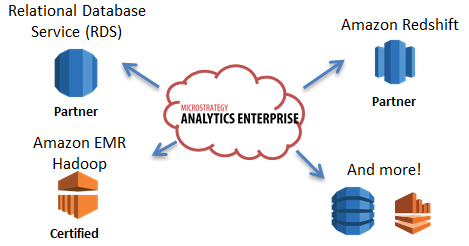 I am pleased to announce that the MicroStrategy Analytics Enterprise solution is now available on the AWS Marketplace on a monthly subscription basis. This powerful tool supports a very wide variety of new-age and traditional data sources and is able to scale up in order to meet ever-increasing demands for analytics, reports, and data visualizations.
I am pleased to announce that the MicroStrategy Analytics Enterprise solution is now available on the AWS Marketplace on a monthly subscription basis. This powerful tool supports a very wide variety of new-age and traditional data sources and is able to scale up in order to meet ever-increasing demands for analytics, reports, and data visualizations.
You can purchase a license for 25, 50 or even 100 users in the Marketplace. Each option includes access to MicroStrategy Mobile Analytics and MicroStrategy Visual Insight, as well as a complementary on-boarding session with a Certified MicroStrategy Sales Engineer and access to Standard Support Services. The monthly subscription fee for the 25 user option is just $500. Above that, you pay for the processing and storage resources on a per-hour or per-GB basis, as appropriate. For example, you can host 25 users on an EC2 m2.2xlarge instance with over 17 Gigabytes of RAM for $2000.48 per month, plus any Elastic Block Storage allocated by the application. In other words, you don’t need to be a traditional “enterprise” to afford enterprise-class Business Intelligence.
Take a Look
Here is the overall architecture:
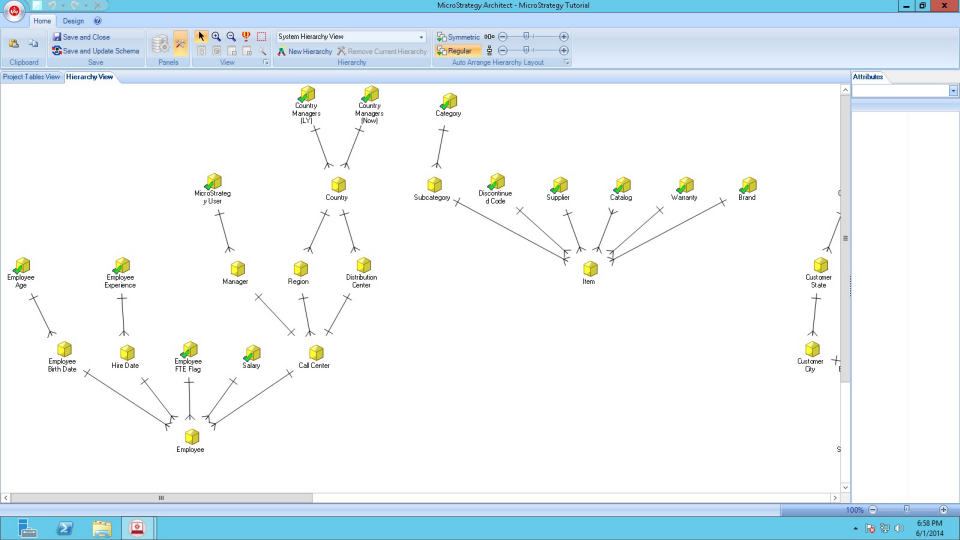
After you launch MicroStrategy Analytics Enterprise from the AWS Marketplace, you simply initiate an RDP session to connect to the EC2 instance so that you can configure and customize the product:
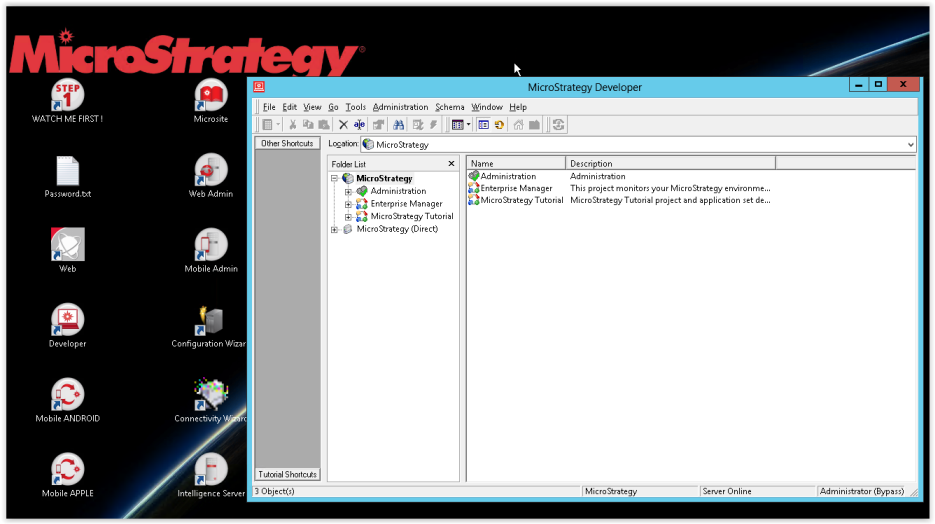
Here is an example of the web output:
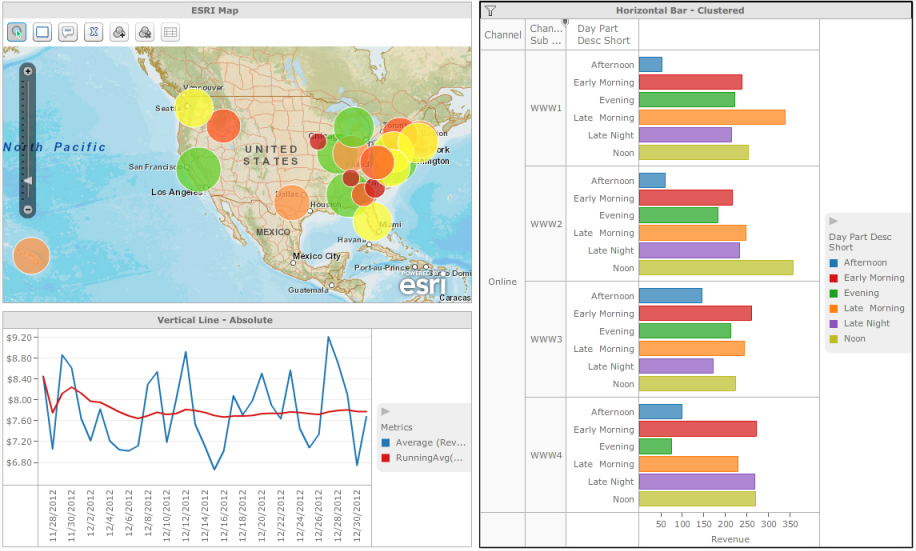
And here’s an example of the Mobile Analytics:
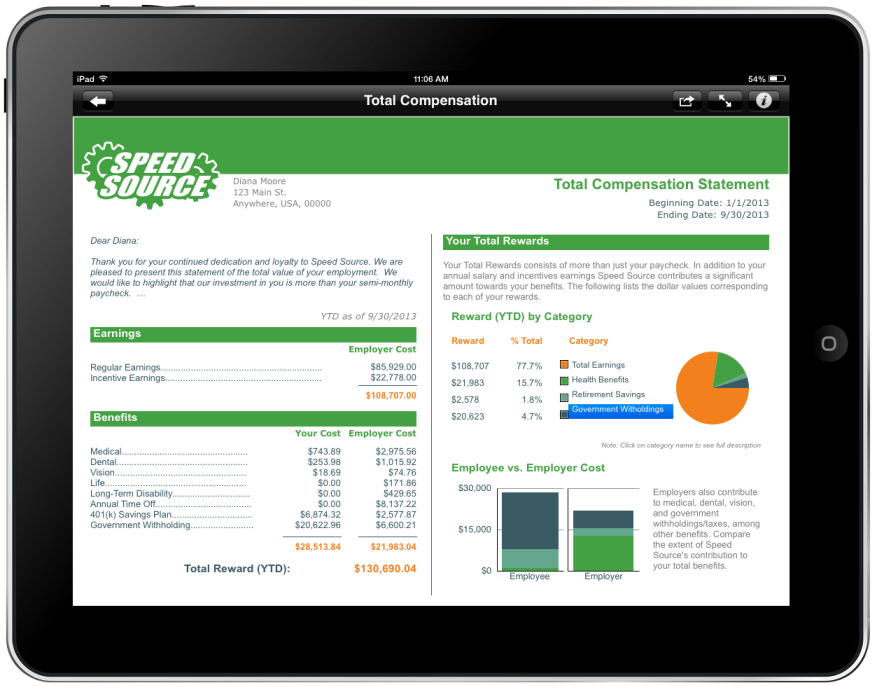
If you are ready to get started, visit the AWS Marketplace and launch the MicroStrategy Analytics Engine.
— Jeff;